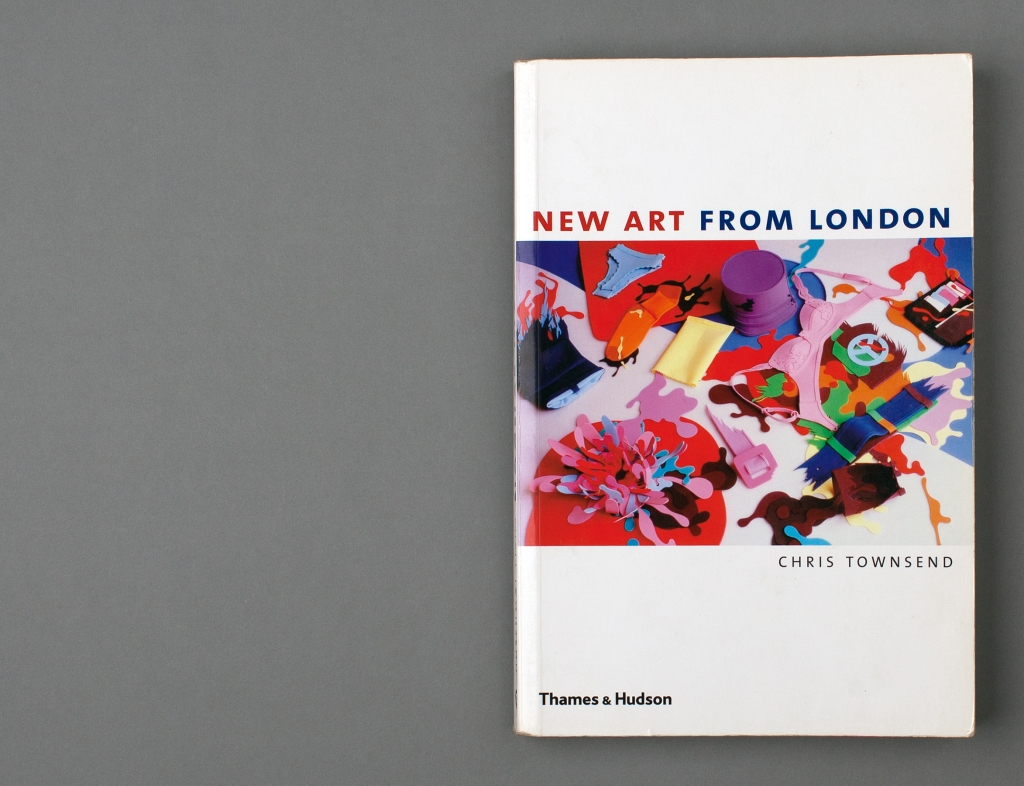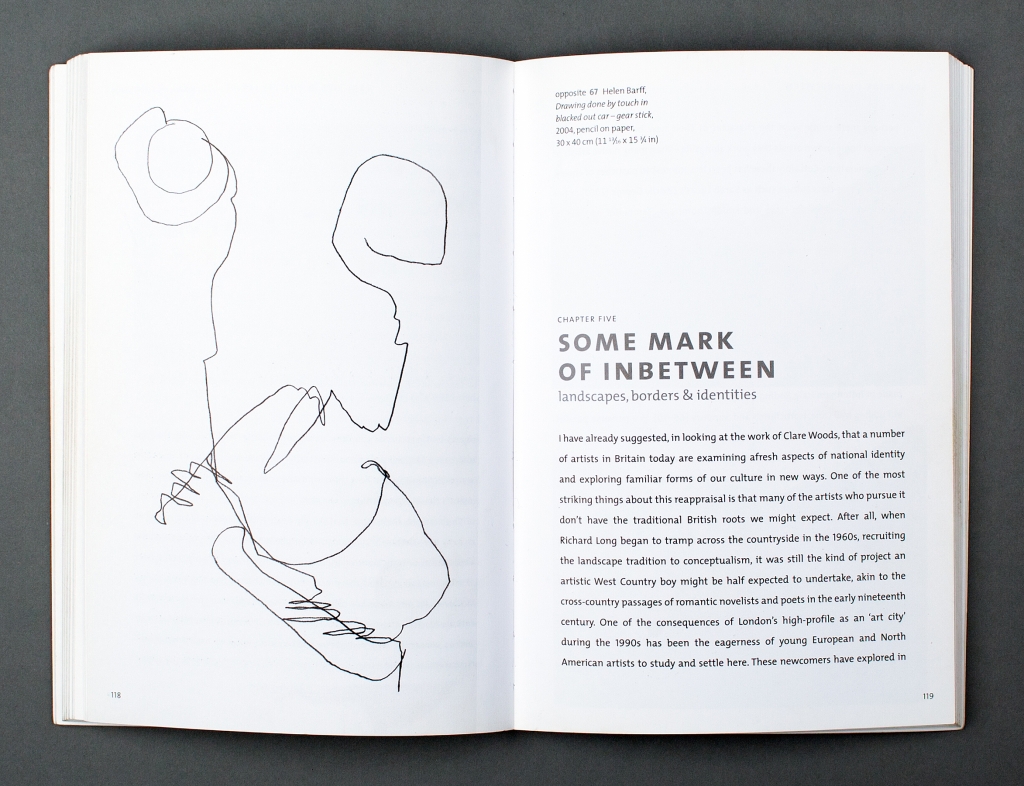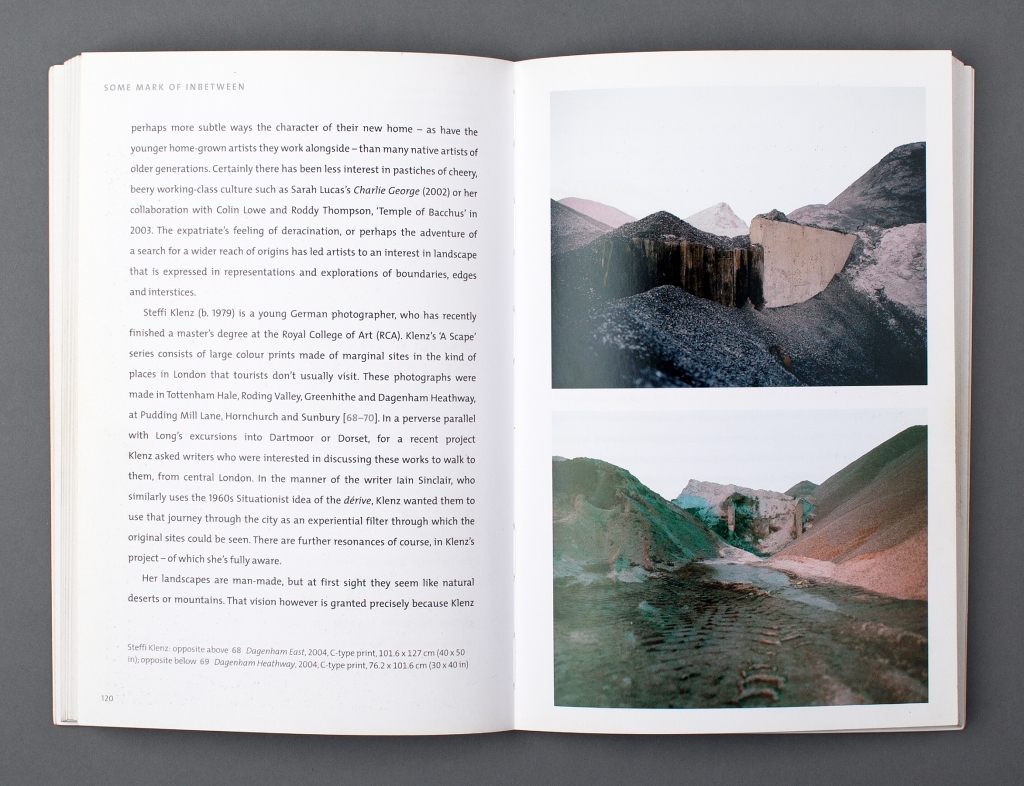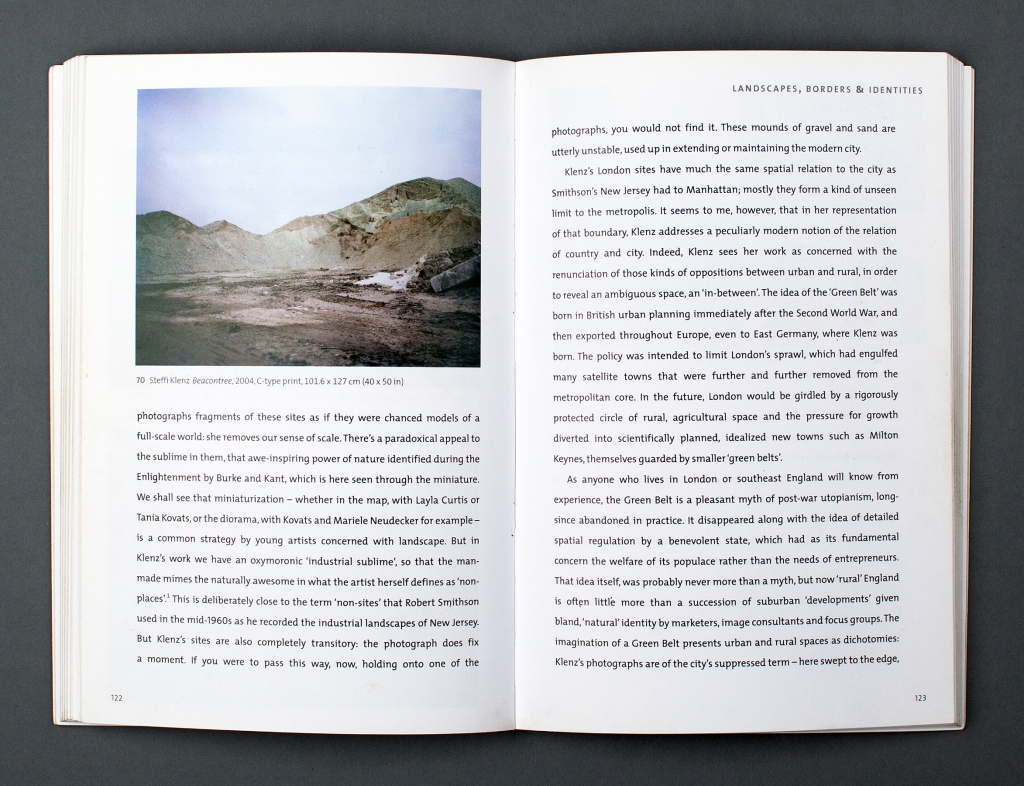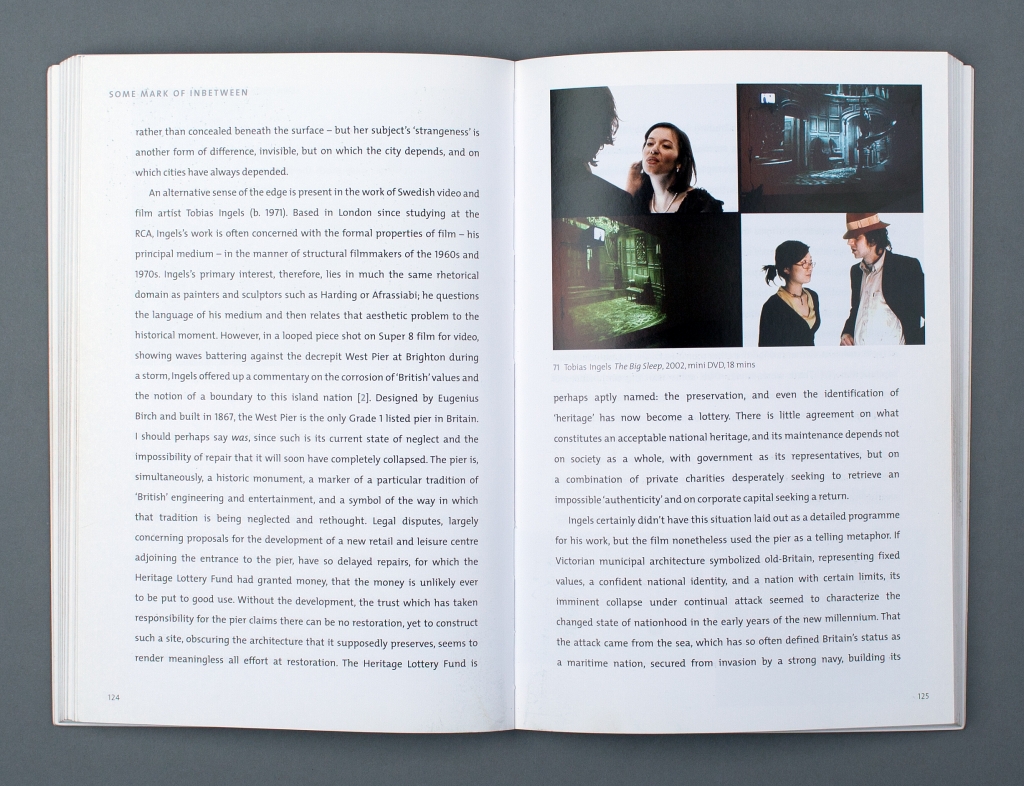New Art from London
Chapter Five
Some mark of in-between
landscape, borders and identities
I have already suggested, in looking at the work of Clare Woods, that a number of artists in Britain today are examining afresh aspects of national identity and exploring familiar forms of our culture in new ways. One of the most striking things about the reappraisal is that many of the artists who pursue it don’t have the traditional British roots we might expect. After all, when Richard Long began to tramp across the countryside in the 1960’s, recruiting the landscape tradition to conceptualism, it was still the kind of project an artistic West Country boy might be half expected to undertake, akin to the cross-‐country passages of romantic novelists and poets in the early nineteenth century. One of the consequences of London’s high profile as an ‘art city’ during the 1990s has been the eagerness of young European and North American artists to study and settle here. These newcomers have explored in perhaps more subtle ways the character of their new home – as have the younger home-‐grown artists they work alongside – than many native artists of older generations. Certainly there has been less interest in pastiches of cheery, beery working-‐ class culture such as Sarah Lucas’s Charlie George (2002) or her collaboration with Colin Lowe and Roddy Thompson, ‘Temple of Bacchus’ in 2003. The expatriate’s feeling of deracination, or perhaps the adventure of a search for a wider reach or origins has led artists to an interest in landscape that is expressed in representation and explorations of boundaries, edges and interstices.
Steffi Klenz (b.1979) is a young German photographer, who has recently finished a master’s degree at the Royal College of Art (RCA). Klenz’s ‘A Scape’ series consists of large colour prints made of marginal sites in the kind of places in London that tourists don’t usually visit. These photographs were made in Tottenham Hale, Roding Valley, Greenhithe and Dagenham Heathway, at Pudding Mill Lane, Hornchurch and Sunbury (68-‐70). In a perverse parallel with Long’s excursions into Dartmoor or Dorset, for a recent project Klenz asked writers who were interested in discussing these works to walk to them, from central London. In the manner of the writer Ian Sinclair, who similarly uses the 1960s Situationist idea of dérive, Klenz wanted them to use that journey through the city as an experimental filter through which the original sites could be seen. There are further resonances of course, in Klenz’s project – of which she is fully aware.
Her landscapes are man-made. But at first sight seem like natural deserts or maintains. That vision however is granted precisely because Klenz photographs fragments of these sites as if they were chanced models of a full-‐scale world: she removes our sense of scale. There’s a paradoxical appeal to the sublime in them, that awe-‐inspiring power of nature identified during the Enlightment by Burke and Kant, which is here seen through miniature.
We shall see that miniaturization – whether in the map, with Layla Curtis or Tania Kovats, or the diorama, with Kovats and Mariele Neudecker for example – is a common strategy by young artists concerned with landscape. But in Klenz’s work we have an oxymoronic ‘industrial sublime’, so that the man-‐made mimes the naturally awesome in what the artist herself defines as ‘non-‐places’. This is deliberately close to the term ‘non-‐sites’ that Robert Smithson used in the mid-‐1960s as he recorded the industrial landscape of New Jersey.
But Klenz’s sites are also completely transitory: the photograph does fix a moment. If you were to pass this way, now, holding onto one of the photographs, you would not find it. These mounds of gravel and sand are utterly unstable, used up in extending or maintain the modern city.
Klenz’s London sites have much the same spatial relation to the city as Smithson’s New Jersey had to Manhattan; mostly hey form a kind of unseen limit to the metropolis. It seems
to me, however, that in her representation of that boundary, Klenz addresses a peculiarly modern notion of the relation of country and city. Indeed, Klenz sees her work as concerned with the renunciation of those kind of oppositions between urban and rural, in order to reveal an ambiguous space, an ‘in-‐between’. The idea of the ‘Green Belt’ was born in British urban planning immediately after the Second World War, and then exported throughout Europe, even to East Germany, where Klenz was born. The policy was intended to limit London’s sprawl, which had engulfed many satellite towns that were further and further removed from the metropolitan core. In the future, London would be girdled by a rigorously protected circle or rural, agricultural space and the pressure for growth diverted into scientifically planned, idealized new towns such as Milton Keynes, themselves guarded by smaller ‘green belts’.
As anyone who lives in London or southeast England will know from experience, the Green Belt is a pleasant myth of post-‐war utopianism, long-‐since abandoned in practice. It disappeared along with the idea of detailed spatial regulation by a benevolent state, which had as its fundamental concern the welfare of its populace rather than the needs of entrepreneurs. That idea itself was probably never more than a myth, but now ‘rural’ England is often little more than a succession of suburban ‘developments’ given bland, ‘natural’ identity by marketers, image consultants and focus groups. The imagination of a Green Belt presents urban and rural spaces as dichotomies: Klenz’s photographs are of the city’s supressed term – here swept to the edge, rather than concealed beneath the surface – but her subject’s ‘strangeness’ is another form of difference, invisible, but on which the city depends, and on which cities have always depended.
Chris Townsend is an independent writer based in Antwerp. He is a regular contributor to Art Monthly and is professor at the Department of Media Arts at the Royal Holloway University of London.
(This text was firstly published in the book New Art from London by Chris Townsend, published in the UK by Thames & Hudson in 2006)
